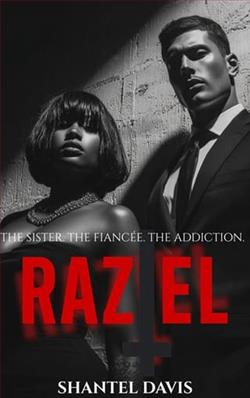Page 19 of Darkwater Lane
I’ll no longer be able to keep her safe. That will becomeherresponsibility.
I lean forward in her chair, my breathing suddenly shallow and my head woozy. I thought I had more time.
I hear my therapist’s voice in my head, telling me to focus on my breathing. To ground myself in my surroundings. Remember that control is an illusion. I don’t keep Lanny safe by shielding her from the world. I keep her safe by teaching her how to exist in the world safely.
Maybe that means letting her keep the account.
That doesn’t mean I don’t plan to keep an eye on it, though.
Before I can spend too much time thinking about it, I scroll through her followers until I find one with a fairly generic-looking account and not much activity. I double-check to make sure the person hasn’t engaged with Lanny’s posts anytime recently.
Then, I pull out my phone and quickly create an Instagram account that mirrors it, with only a slight variation in the spelling. I copy over the profile picture and all the posts. Unless someone was looking very closely, they wouldn’t be able to tell the difference between the two accounts.
Once I have that all set, I send a friend request to Lanny. Since I’m logged into her account on her computer, I immediately accept the request, then have her unfriend the account I mirrored. Basically, I’ve replaced it with my nearly identical one. And with that, I’ve officially snuck my way onto my daughter’s Instagram page.
I sit for a moment longer with this decision, wondering if I’ve crossed a line.
If I have, it’s for her benefit.
I’m still sitting at Lanny’s computer when my phone alarm goes off, letting me know it’s time for Connor to get ready for his afternoon shift at the barn where he works several times a week. I barely shut everything down and make it out of Lanny’s room before the front door swings open. Connor races in, shouting hello before disarming and re-arming the security system.
Even though I’m standing awkwardly in the hallway, and definitely feel like my expression screams guilt, Connor barely gives me a second glance as he heads to his bedroom. “I’ll be ready in five minutes,” he calls out.
With a sigh of relief, I grab my laptop from my office and head to the kitchen to refill my water bottle. Moments later, Connor emerges wearing old jeans, well-worn work boots, and a flannel shirt with the sleeves rolled up.
He brushes his bangs from his eyes, and something about the gesture makes him look so young. I’m suddenly flooded withmemories of all the times I’ve run my fingers through his hair to comfort him over the years.
He grabs his jacket from the hook by the door and lifts his eyebrows impatiently. “Mom? You ready?”
And, just like that, he’s my fifteen-year-old again.
“How was the library?” I ask once we’re in the car and on our way to the barn.
He shrugs and continues looking out the side window. “Fine.”
I purse my lips, trying to decide whether to push for more details. It’s been difficult to identify where the line is between typical teenager behavior and avoidance that might be indicative of underlying issues that need addressing.
As if he can sense my train of thought, he rolls his head on the headrest until he faces me. “It’s a library, Mom. There were books. There were old people. There were some little kids there for story hour. It was fine. Stop overthinking it.”
I flash him a smile. A mother’s job is to overthink. Otherwise, things won’t get done.
“Tell me about the book you’re reading?” I try instead.
For a moment, I think he’ll shrug the question off. Instead, he launches into a recap of a complicated fantasy plot that’s way too convoluted to follow. But he’s talking, and engaged—even animated—and that makes my heart happy.
He’s explaining one of the magic systems in the book when we turn into the entrance to the large farm that hosts the equine therapy program. We drive past multiple paddocks before pulling into a gravel lot near several barns. Connor hops out and waves as he takes off toward the office to check in for work.
In addition to the barns, there are indoor and outdoor rings set up with jumps, cones, and other obstacles. Dotted throughout the property are picnic tables and Adirondack chairs so parents can watch their kids practice or just enjoy the peace and tranquility of being outside in nature.
Even though it’s winter, and the air is crisp, the sun is warm enough that I decide to sit outside. I pull on my jacket and a wool hat and carry my bag to a chair by a leafless oak. Once seated, I set up my laptop to try and get some work done.
But my thoughts return to Leonard Varrus and my conversation with Taylor earlier this morning. How is it possible for a man like Varrus to disappear? In the profile I’d put together while doing my own investigation into his background, I hadn’t come across anything to suggest that he was particularly tech-savvy. He was a man in his seventies, who’d worked low-level finance jobs for most of his life. He’d only had one kid, a daughter, who went missing one summer afternoon.
He and his wife were tireless in their search for her. It wasn’t until Melvin’s crimes were uncovered and the watery graveyard where he’d disposed of the bodies was found, that they learned she’d been one of his victims. Leonard’s wife died soon after the discovery, the strain of grief too much.
Leo turned to the Lost Angels, looking for support and understanding from others who’d also lost loved ones at Melvin’s hand. According to Sam, Leo hadn’t initially been interested in revenge or going after me and my family.
All of that changed when he began dating Miranda Tidewell, one of the original founders of the Lost Angels. Her daughter, Vivian, had been Melvin’s second victim.















